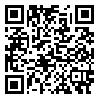دوره 2، شماره 3 - ( Spring 2011 -- 1390 )
جلد 2 شماره 3 صفحات 72-68 |
برگشت به فهرست نسخه ها
Download citation:
BibTeX | RIS | EndNote | Medlars | ProCite | Reference Manager | RefWorks
Send citation to:



BibTeX | RIS | EndNote | Medlars | ProCite | Reference Manager | RefWorks
Send citation to:
Khreisat W. Clinical Applications of Electroencephalogram in Children. BCN 2011; 2 (3) :68-72
URL: http://bcn.iums.ac.ir/article-1-148-fa.html
URL: http://bcn.iums.ac.ir/article-1-148-fa.html
Clinical Applications of Electroencephalogram in Children. مجله علوم اعصاب پایه و بالینی. 1390; 2 (3) :68-72
چکیده:
Introduction:
To obtain a baseline for clinical application of Electroencephalography in children and to evaluate the Electroencephalography findings in children with various acute and chronic CNS disorders and non epileptic events.Methods:
electroencephalography Electroencephalography records of 250 patients were studied in neurophysiology departments of Queen Rania AL-Abdullah Hospital for children in Jordan. For each patient who had undergone Electroencephalography the following data were recorded: age, sex, source of referral (inpatient or outpatient department), reason for electroencephalography Electroencephalography , diagnostic impressions, clinical presentation, the result of the Electroencephalography examinations and clinical correlation between the seizure type and Electroencephalography finding.Results:
Males slightly outnumbered females: 55% males. The majority of cases were Electroencephalography between 6-12 years, Total of 63.2 % of all referrals for Electroencephalography were from outpatient clinics while inpatients accounted for 36.8% of referred cases, with pediatric neurology department referrals being the highest (28.8 %). majority of diagnosis at referral were suspected epilepsy (80%)with epileptiform Electroencephalography abnormalities in 32%. Over all 64 % the Electroencephalography records were normal, including all Electroencephalography records of children with syncope and headache.Discussion:
We conclude that there are many unnecessary routine Electroencephalography recordings in children. Investigation of epilepsy and acute encephalopathies appear to be the most valuable indications for routine pediatric Electroencephalography . Electroencephalography can be helpful in classification of seizures. Finding a way to reduce Electroencephalography requests is recommended.| بازنشر اطلاعات | |
 |
این مقاله تحت شرایط Creative Commons Attribution-NonCommercial 4.0 International License قابل بازنشر است. |



